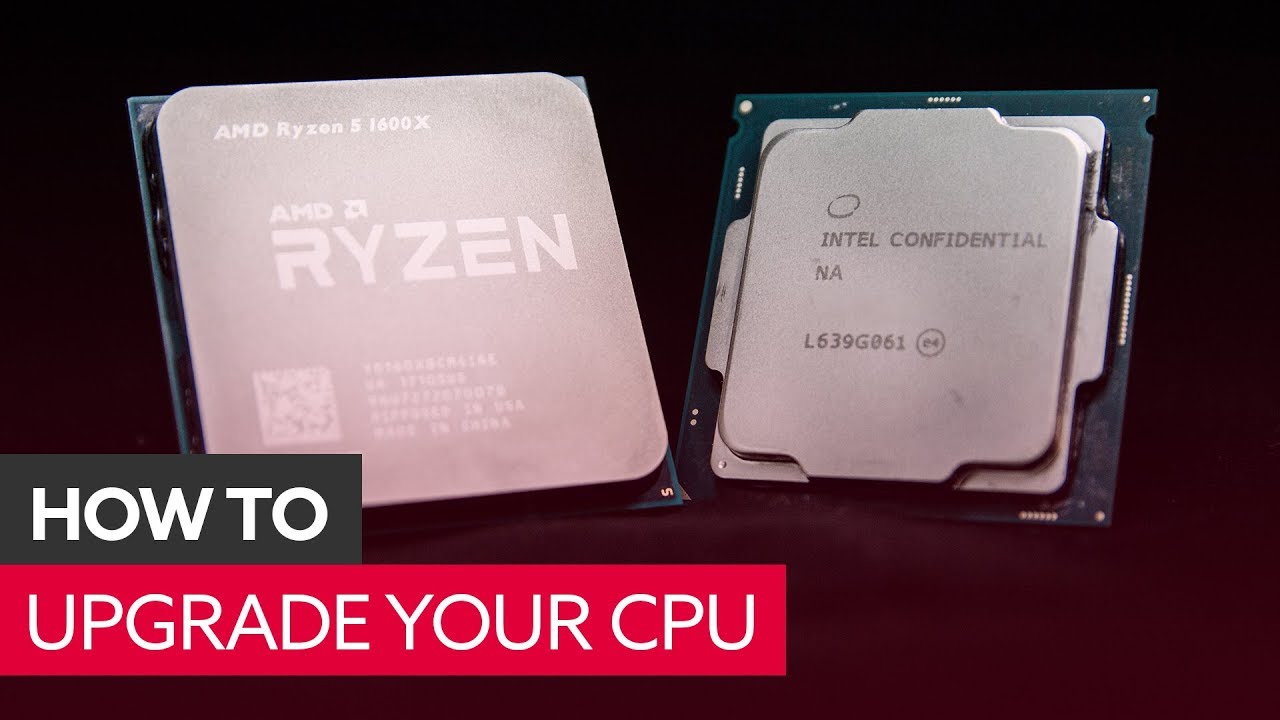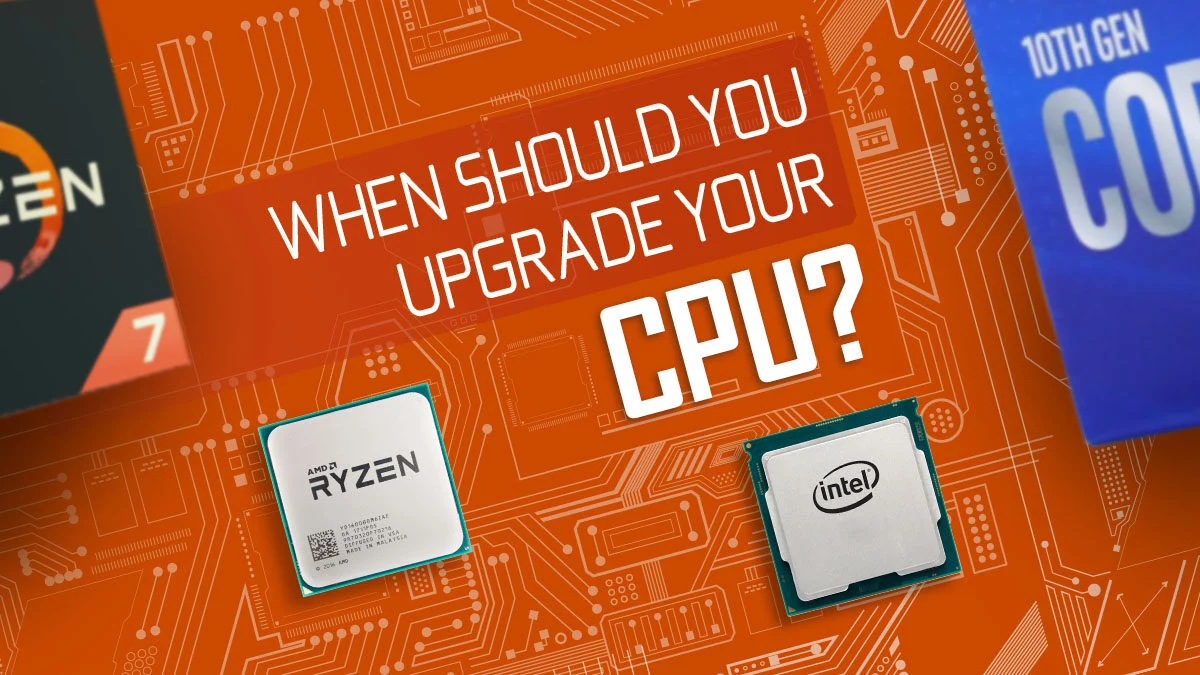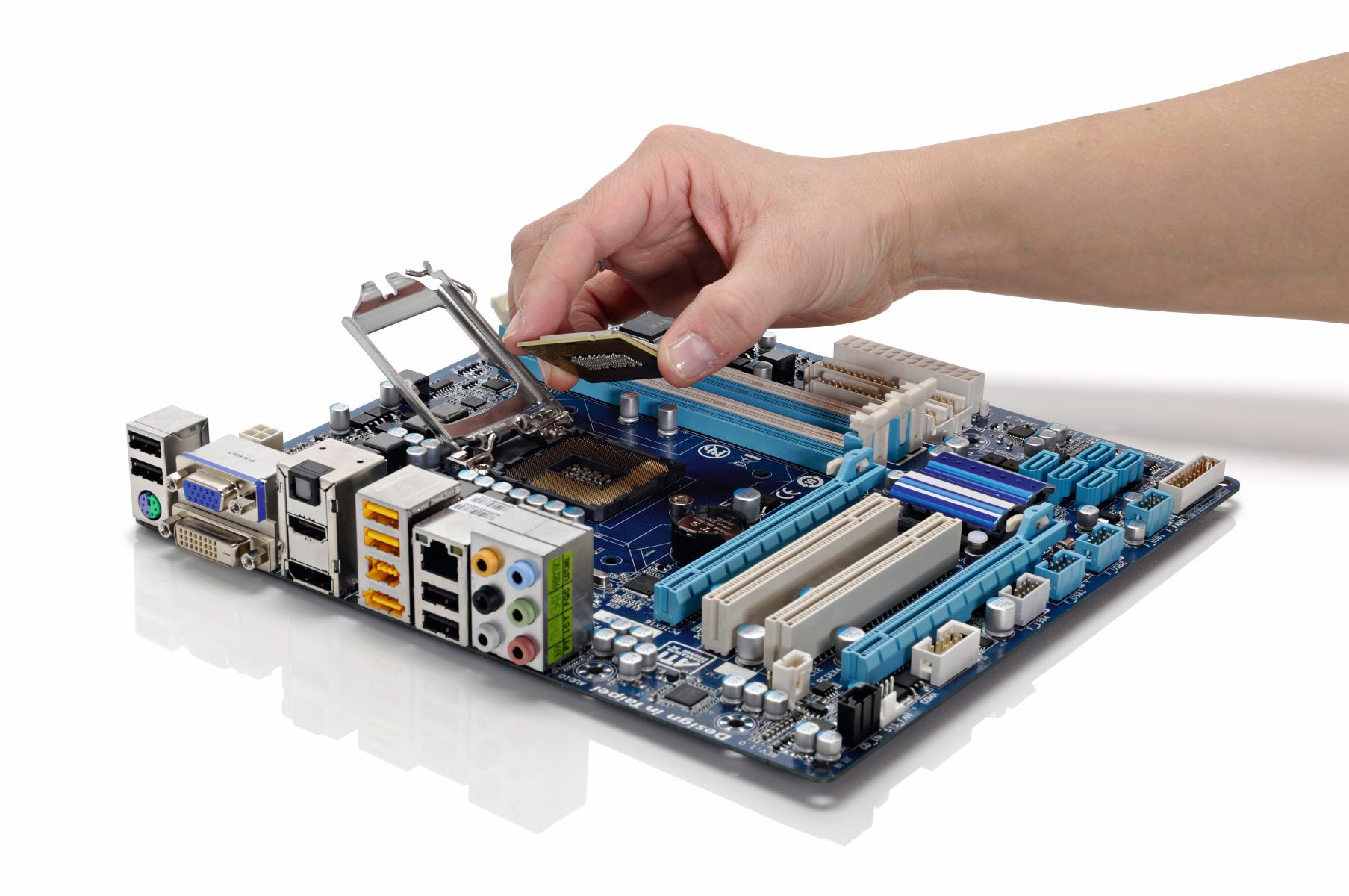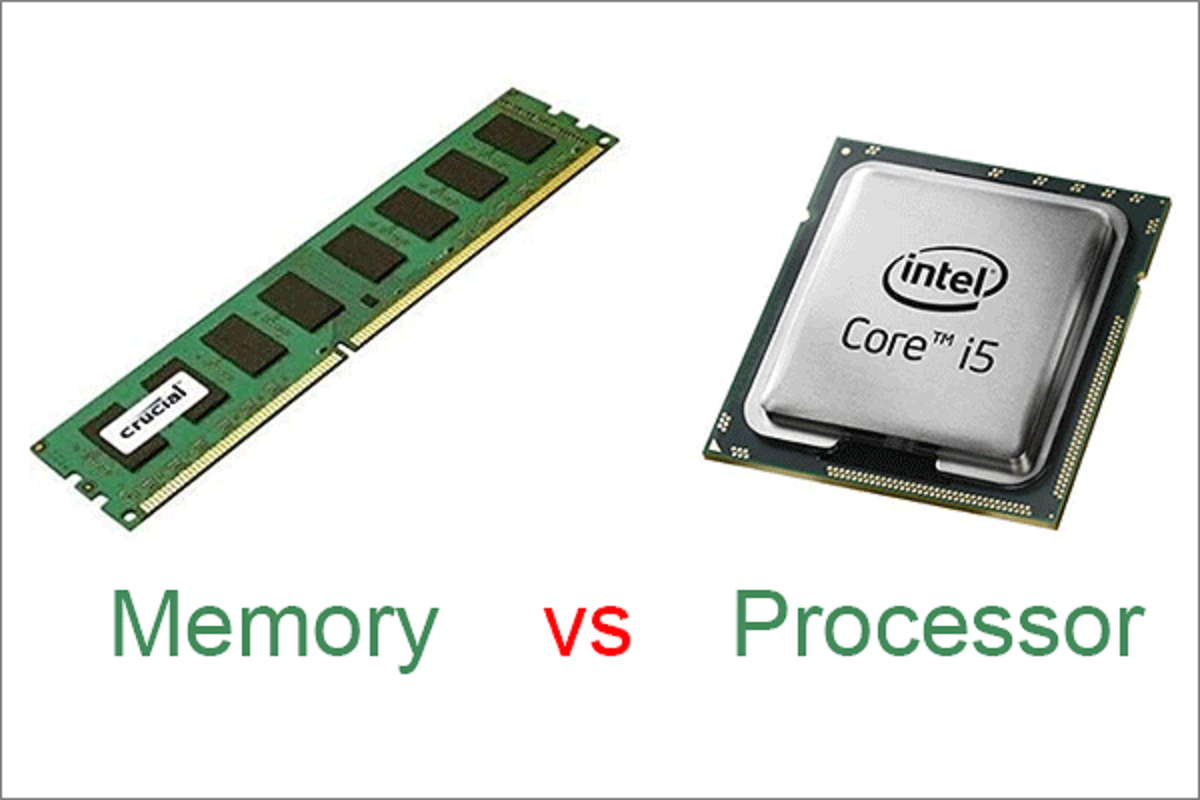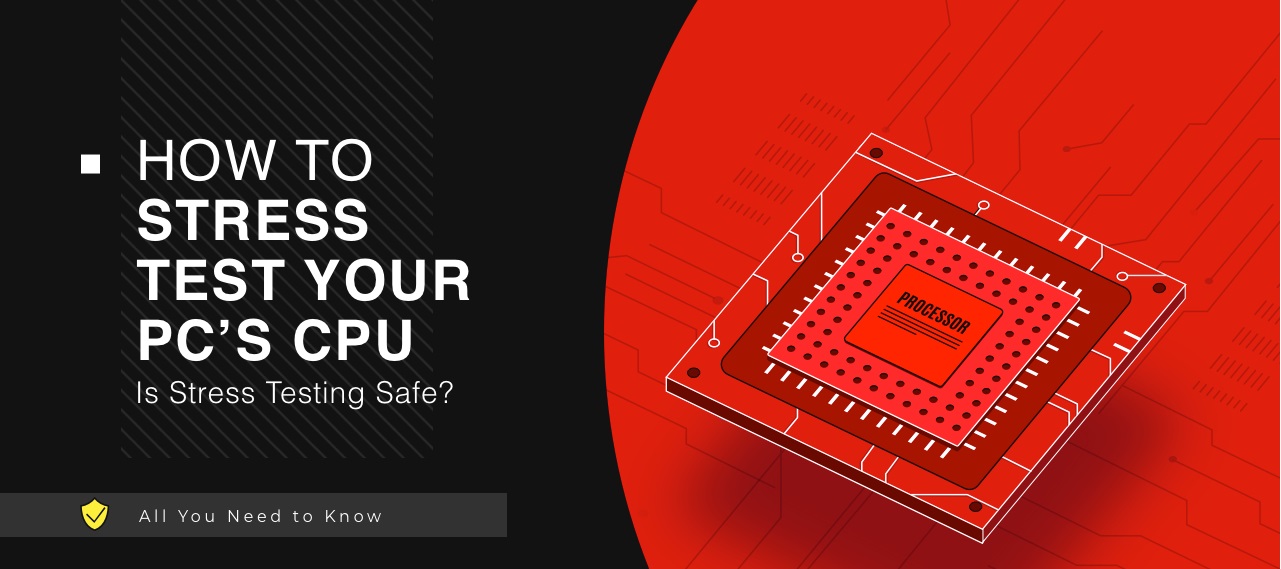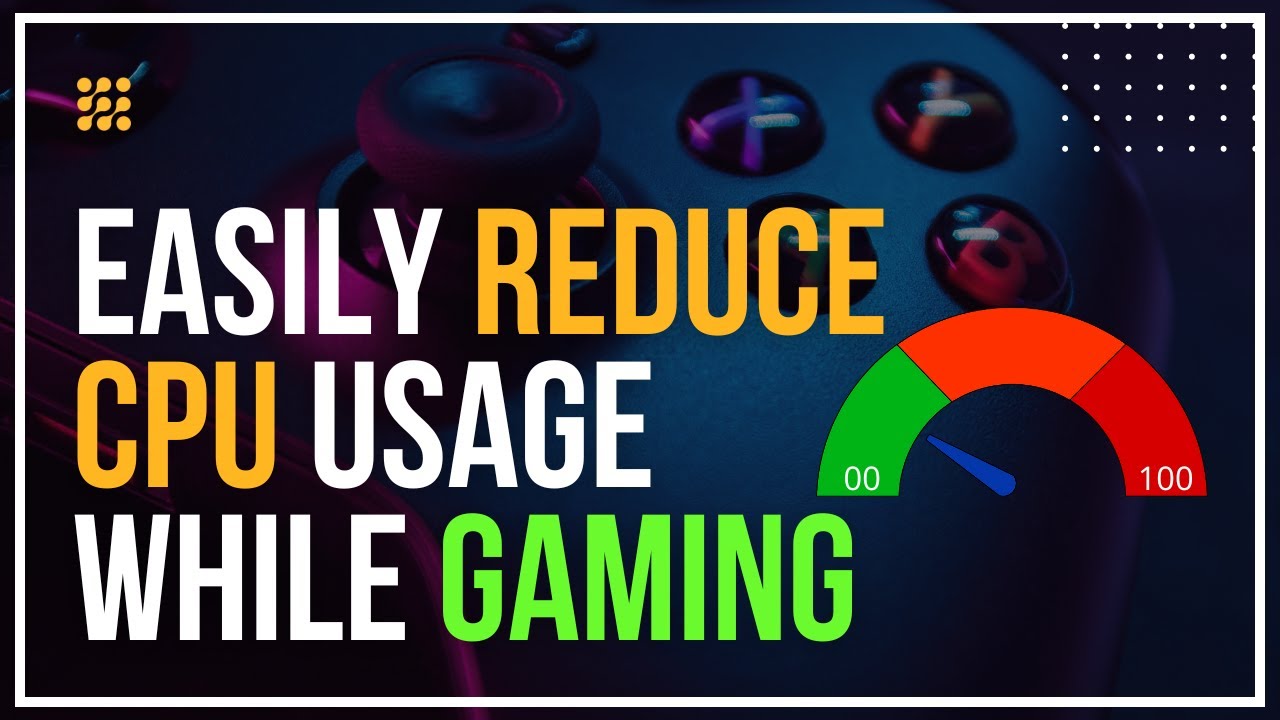How To Upgrade Your CPU
Introduction
Upgrading your CPU (Central Processing Unit) can significantly boost the performance of your computer and enhance its speed and responsiveness. Whether you’re a gamer, a content creator, or someone who simply wants to improve their computer’s overall performance, a CPU upgrade can make a noticeable difference. In this guide, we will walk you through the process of upgrading your CPU step-by-step, ensuring that you have all the necessary information to successfully complete the upgrade.
A CPU upgrade involves replacing the existing processor in your computer with a more powerful and advanced model. The CPU is the brain of your computer, responsible for executing instructions and performing calculations. By upgrading to a faster and more efficient CPU, you can enjoy quicker application load times, smoother multitasking, and improved overall system performance.
Before you begin the upgrade process, it’s important to note that CPU upgrades require some technical knowledge and expertise. It is recommended that you have a basic understanding of computer hardware and are comfortable working with delicate computer components. If you feel uncertain or uncomfortable, seek assistance from a professional technician.
Throughout this guide, we will provide detailed step-by-step instructions and essential tips to help you successfully upgrade your CPU. We will cover topics such as choosing the right CPU, preparing your computer for the upgrade, removing the old CPU, installing the new CPU, applying thermal paste, reassembling your computer, updating your BIOS, and testing for any troubleshooting issues.
It’s important to follow these steps carefully and pay close attention to the instructions provided. Properly upgrading your CPU can greatly enhance your computer’s performance and extend its lifespan.
So, with all that said, let’s dive into the world of CPU upgrades and explore the process of transforming your computer into a more powerful machine.
How To Upgrade Your CPU
Choosing the Right CPU Upgrade
When it comes to upgrading your CPU, selecting the right processor is crucial for ensuring optimal performance and compatibility with your computer. Here are some key factors to consider when choosing a CPU upgrade.
1. Socket Compatibility: The first thing to check is the compatibility of the new processor with your motherboard’s socket. Different CPUs require different socket types, so it’s important to ensure that the CPU you choose is compatible with your motherboard. Check the specifications of your motherboard or consult the manufacturer’s website for details.
2. Performance Needs: Identify your specific needs and usage patterns. Are you a casual user who mainly performs basic tasks like web browsing and word processing? Or are you a power user who engages in resource-intensive activities such as gaming or video editing? Understanding your usage requirements will help you determine the level of performance you need from your new CPU.
3. Core Count and Clock Speed: The number of cores and clock speed are important factors in CPU performance. Cores allow the CPU to handle multiple tasks simultaneously, while clock speed determines how quickly those tasks are processed. Generally, more cores and higher clock speeds result in better performance. Consider your computing needs and budget when deciding on the ideal combination of core count and clock speed.
4. Thermal Design Power (TDP): TDP is a measure of how much heat a CPU generates. It’s essential to choose a CPU with a TDP that matches your cooling system’s capabilities. A higher TDP CPU may require more robust cooling solutions, such as an upgraded heat sink or liquid cooling. Make sure your computer’s cooling system is sufficient to handle the thermal demands of the new CPU.
5. Budget: Finally, consider your budget constraints. CPUs come in a wide range of prices, so it’s important to find a balance between performance and affordability. Consider the performance gains that each CPU offers in relation to its price and choose the option that best fits your budget.
Research thoroughly and read reviews from reputable sources to gather information about various CPU models. Take into account factors like benchmark scores, power efficiency, and user feedback to make an informed decision.
By carefully evaluating these factors, you can choose a CPU upgrade that perfectly aligns with your needs, ensuring a smooth and effective performance boost for your computer.
How To Upgrade Your CPU
Preparing Your Computer
Before you begin the process of upgrading your CPU, it is important to take the necessary precautions and prepare your computer. Here are the steps to follow to ensure a smooth and successful CPU upgrade.
1. Backup Your Data: Before making any changes to your computer’s hardware, it is always a good idea to back up your important files and data. This ensures that even if something goes wrong during the CPU upgrade process, your valuable data remains safe. You can create a backup on an external hard drive, cloud storage, or use any other reliable method.
2. Gather the Necessary Tools: To safely upgrade your CPU, you will need a few tools. Ensure you have the following items ready:
– A screwdriver set with various sizes to open the computer case and remove the CPU heatsink.
– An antistatic wrist strap or mat to prevent static electricity to protect sensitive computer components.
3. Prepare Your Workspace: Find a clean and well-ventilated area to work on your computer. Make sure you have enough space to lay out the necessary tools and components without clutter or interference. A static-free workplace is essential to prevent damage to the delicate electronic components.
4. Power Off and Disconnect: Start by shutting down your computer and disconnecting all peripheral devices such as monitors, keyboards, and printers. Unplug the power cord to ensure that there is no electrical current running through the system.
5. Ground Yourself: To prevent any static discharge from damaging the sensitive computer parts, it is crucial to ground yourself. Wear an anti-static wrist strap and attach it to a metal part of the computer case. This will help dissipate any static electricity from your body.
6. Open the Computer Case: Carefully remove the screws or fasteners that secure the computer case and gently remove the side panel. This will give you access to the internal components of your computer.
By following these steps to prepare your computer, you ensure that you have taken all necessary precautions and are ready to move on to the next phase of the CPU upgrade process. Ready yourself with the right tools in an appropriate workspace to ensure a successful and trouble-free CPU upgrade experience.
How To Upgrade Your CPU
Removing the Old CPU
Now that you have prepared your computer for the CPU upgrade, it’s time to remove the old CPU from your system. Follow these steps carefully to ensure a smooth removal process:
1. Identify the CPU Socket: Locate the CPU socket on your motherboard. It is a square or rectangular socket with a lever or latch mechanism holding the CPU in place. Take note of how the old CPU is seated within the socket.
2. Unlock the CPU Socket: Gently lift the lever or release the latch to unlock the CPU socket. This will release the tension holding the CPU in place. Double-check the motherboard manual for specific instructions based on your motherboard model.
3. Remove the CPU Cooler: If your CPU has a separate cooler or heat sink attached, carefully detach it from the old CPU. Depending on the type of cooling setup, you may need to remove screws or release clips to separate the cooler from the CPU.
4. Lift the CPU: Once the CPU cooler is detached, gently lift the old CPU by its sides. Be cautious not to touch the pins or contacts on the bottom of the CPU as they are sensitive to static electricity and physical damage.
5. Inspect and Clean: Take a moment to inspect the CPU socket and the back of the old CPU. Look for any signs of damage or excessive dust build-up. Use compressed air or a clean, soft brush to remove any debris or dust that may have accumulated.
6. Store the Old CPU: If the old CPU is still in working condition, you may consider keeping it as a backup or selling it. Store it in an anti-static bag in a safe place to protect it from damage.
7. Handle with Care: Throughout the process, be cautious not to apply excessive force or bend any pins on the CPU or motherboard. Delicate handling ensures that you don’t damage the components during the removal process.
By following these steps, you can safely remove the old CPU from your computer. Remember to keep the CPU and socket clean and handle everything with care. With the old CPU out of the way, you are ready to proceed with installing the new CPU in the next section of the upgrade process.
How To Upgrade Your CPU
Installing the New CPU
With the old CPU safely removed from your computer, it’s time to install the new CPU. Follow these steps carefully to ensure a successful installation:
1. Verify Compatibility: Double-check that the new CPU you have chosen is compatible with your motherboard. Ensure that the socket type and other specifications match the requirements of the new processor.
2. Align the CPU: Carefully align the new CPU with the socket on the motherboard, ensuring that the notches or markers on the CPU align with the ones on the socket. Never force the CPU into place. It should easily drop into the socket without applying excessive pressure.
3. Secure the CPU: Once the CPU is aligned, gently lower the latch or lever to lock the CPU into place. Make sure it is securely fastened and properly seated. Refer to your motherboard manual for specific instructions on how to secure the CPU.
4. Install the CPU Cooler: If your CPU requires a separate cooler or heat sink, attach it to the new CPU according to the manufacturer’s instructions. Apply thermal paste to the CPU, following the recommended application method. Ensure proper contact and mounting of the cooler to the CPU.
5. Connect CPU Power: Some CPUs require additional power connections. Check your motherboard manual and connect the necessary power cables to the CPU power headers on the motherboard.
6. Recheck Connections: Take a moment to ensure that all cables and connectors are secure and properly connected. Double-check that there are no loose connections or cables obstructing the CPU or cooling system.
7. Close the Computer Case: Carefully place the side panel back onto the computer case and secure it with the screws or fasteners. Ensure that the case is properly aligned and closed, providing a secure and stable enclosure for your newly installed CPU.
By following these steps, you can successfully install the new CPU in your computer. Remember to handle the CPU and components with care, ensuring proper alignment and secure fastening. With the new CPU in place, you are one step closer to experiencing enhanced performance and speed on your computer.
How To Upgrade Your CPU
Applying Thermal Paste
Thermal paste is a crucial component when installing a new CPU. It helps improve heat transfer between the CPU and the heatsink or cooler, ensuring optimal cooling efficiency. Here is a step-by-step guide on how to apply thermal paste properly:
1. Clean the CPU: Before applying thermal paste, ensure that the surface of the CPU is clean and free from any residue or old thermal compound. Use isopropyl alcohol and a lint-free cloth or cotton swab to gently clean the CPU’s surface.
2. Apply the Thermal Paste: Take a small amount of thermal paste, about the size of a pea or a grain of rice. Place it in the center of the CPU surface. Avoid using excessive amounts of paste as it can cause overheating and interfere with the CPU’s operation.
3. Spread the Paste: Use a plastic applicator, a clean spatula, or the bottom of the thermal paste tube to spread the paste evenly across the surface of the CPU. Ensure that the paste covers the entire surface, creating a thin and uniform layer. Avoid applying too much pressure while spreading.
4. Place the Cooler: Carefully place the CPU cooler or heatsink on top of the CPU, aligning it with the mounting screws or clips. Apply gentle downward pressure to ensure proper contact. The thermal paste will help fill any gaps and enhance heat transfer.
5. Secure the Cooler: Fasten the cooler in place using the appropriate screws or clips. Ensure that the cooler is evenly and securely attached to the CPU, providing proper cooling and preventing any movement.
6. Double-Check: After securing the cooler, double-check that the thermal paste is evenly spread and hasn’t overflowed onto other components. Excessive thermal paste can cause electrical shorts and impact cooling.
7. Reassemble the Computer: Once you have confirmed the proper application of thermal paste, proceed to reassemble the computer by closing the case and connecting any necessary cables and peripherals.
Properly applying thermal paste is essential for maintaining proper cooling and preventing overheating issues. By following these steps and taking the necessary precautions, you can ensure that your upgraded CPU operates efficiently and remains at optimal temperatures.
How To Upgrade Your CPU
Reassembling Your Computer
After completing the CPU upgrade and applying thermal paste, it’s time to reassemble your computer. Follow these steps to ensure that everything is properly connected and securely in place:
1. Connect Cables and Components: Start by reconnecting all cables to their respective ports. This includes power cables, data cables, and any other peripheral connections. Ensure that each cable is securely plugged in, and check for any loose connections.
2. Install RAM and Expansion Cards: If you had to remove the RAM or any expansion cards during the CPU upgrade process, now is the time to reinstall them. Gently insert them into the appropriate slots, ensuring they are fully seated and locked in place.
3. Secure the Computer Case: Carefully align the side panel of the computer case and secure it with the screws or fasteners. Ensure that the case is properly closed and there are no gaps or loose panels.
4. Connect peripherals: Reconnect your keyboard, mouse, monitor, speakers, and any other peripherals. Make sure they are properly connected and powered on.
5. Plug in the Power Cord: Reconnect the power cord to the back of the computer case and plug it into a power outlet. Double-check that the power supply switch is turned on.
6. Boot Up and Check: Press the power button to start your computer. Listen for any unusual noises and check if the fans are spinning. Monitor the startup process and ensure that the computer boots up properly. If there are any issues, refer to the troubleshooting section.
7. Test the CPU: To ensure that the new CPU is functioning correctly and running at optimal performance, run CPU stress tests or benchmarking software. Monitor the CPU temperatures and performance to ensure everything is working as expected.
By following these steps, you can safely and effectively reassemble your computer after a CPU upgrade. Pay attention to cable connections, ensure all components are properly seated, and listen for any abnormal noises during startup. With everything reassembled, you can now enjoy the improved performance of your upgraded CPU.
How To Upgrade Your CPU
Updating Your BIOS
After installing a new CPU, it is often necessary to update your computer’s BIOS (Basic Input/Output System) to ensure compatibility and optimal performance. The BIOS is firmware that resides on the motherboard and controls the basic functions of the computer. Here are the steps to update your BIOS:
1. Identify Your Motherboard: Determine the make and model of your motherboard. You can usually find this information by checking the manual or looking for markings on the motherboard itself.
2. Download the Latest BIOS Update: Visit the manufacturer’s website and locate the support or downloads section. Look for the latest BIOS update for your specific motherboard model and download it onto a USB flash drive. Make sure to choose the correct version for your motherboard.
3. Backup Your Current BIOS: Before proceeding with the BIOS update, it is recommended to create a backup of your current BIOS. Most motherboard manufacturers provide tools or instructions for creating a backup.
4. Prepare the USB Drive: Format the USB flash drive in FAT32 format. Copy the BIOS update file onto the USB drive.
5. Enter BIOS Setup: Restart your computer and enter the BIOS setup by pressing the designated key during the startup process. The key to access the BIOS setup varies depending on your motherboard (common keys include F2, Del, or Esc).
6. Update BIOS: Within the BIOS setup utility, locate the option for updating the BIOS. This option may be named differently depending on your motherboard. Follow the on-screen instructions to select the BIOS update file from the USB drive and initiate the update process. Do not interrupt the update or turn off the computer during this process, as it may cause irreversible damage.
7. Verify BIOS Update: After the update is complete, restart your computer and enter the BIOS setup again. Check the BIOS version to ensure that it has been successfully updated to the latest version.
8. Configure BIOS Settings: Depending on the BIOS update, you may need to reconfigure certain settings such as boot order, CPU settings, or memory settings. Take note of any changes made to the default settings and adjust them accordingly.
By updating your BIOS, you ensure that your computer’s firmware is compatible with your new CPU and is optimized for performance. Remember to follow the manufacturer’s instructions carefully and take necessary precautions during the BIOS update process. With the updated BIOS, you can take full advantage of your newly upgraded CPU.
How To Upgrade Your CPU
Testing and Troubleshooting
After completing the CPU upgrade process, it’s important to thoroughly test your computer for any issues and troubleshoot any problems that may arise. Here are some steps you can follow to ensure a smooth transition and identify any potential issues:
1. Boot Up and Monitor Performance: Start your computer and monitor its performance. Check for any unusual behavior, such as system freezes, crashes, or unexpected restarts. Make sure all components are functioning properly, including the CPU, RAM, and storage devices.
2. Run Stress Tests: Use specialized software to stress test your CPU and system. These stress tests simulate heavy workloads and can help to identify any stability issues or overheating problems. Monitor the CPU temperatures, clock speeds, and overall system performance during these tests.
3. Check CPU Temperatures: Monitor the CPU temperatures during different workloads and activities. Elevated temperatures can indicate insufficient cooling or improper application of thermal paste. Use a reliable software tool to monitor and track the CPU temperatures over time.
4. Update Drivers: It is essential to ensure that all necessary drivers, especially CPU-related drivers, are up to date. Visit the manufacturer’s website and download the latest drivers for your specific motherboard, chipset, and other relevant components.
5. Check for BIOS Updates: Periodically check for any BIOS updates from the motherboard manufacturer. Updated BIOS versions often include performance improvements, bug fixes, and enhanced compatibility, which can address any issues that may arise after a CPU upgrade.
6. Troubleshoot Incompatibility Issues: If you encounter any compatibility issues with specific software, ensure that the software is updated to the latest version. Additionally, double-check the system requirements to confirm that your upgraded CPU meets or exceeds the software’s requirements.
7. Seek Professional Help: If you encounter persistent issues or are unsure about how to diagnose and troubleshoot problems, it is advisable to seek assistance from a professional technician. They can provide specialized knowledge and expertise to identify and resolve any underlying issues.
By thoroughly testing your computer and addressing any issues that may arise, you can ensure that your CPU upgrade delivers the desired performance improvements. Pay attention to any abnormal behavior, monitor temperatures, and keep software and drivers up to date. With proper testing and troubleshooting, you can enjoy the full benefits of your newly upgraded CPU.
How To Upgrade Your CPU
Conclusion
Upgrading your CPU can be a game-changer when it comes to enhancing your computer’s performance and overall user experience. By following the steps outlined in this guide, you can successfully upgrade your CPU and enjoy the benefits of increased speed, improved multitasking, and smoother operation.
We started by discussing the importance of choosing the right CPU for your specific needs and understanding the compatibility considerations. We then moved on to preparing your computer, removing the old CPU, and installing the new one carefully. Applying thermal paste correctly is crucial for efficient heat transfer and optimal cooling performance.
Throughout the process, we emphasized the importance of handling components with care, grounding yourself to avoid static electricity discharge, and ensuring proper connections. Updating your BIOS and testing your system for any issues are also vital steps to maximize the benefits of your CPU upgrade.
However, it’s important to note that CPU upgrades may not be necessary or suitable for all users. Before deciding to upgrade, consider your specific needs, budget, and whether a CPU upgrade will significantly enhance your computing experience.
If you’re uncertain or uncomfortable performing the upgrade yourself, it’s always recommended to seek assistance from a professional technician. They can help ensure the upgrade is done correctly and minimize the risk of any damage.
With the right CPU upgrade, you can unlock the full potential of your computer and enjoy improved performance for a variety of tasks, from gaming and content creation to everyday productivity. Remember to stay informed about the latest advancements in CPU technology and periodically evaluate whether an upgrade is beneficial for your specific use case.
We hope this guide has provided you with the knowledge and confidence to successfully upgrade your CPU. Wishing you the best of luck in your CPU upgrade journey and a faster, more powerful computing experience!







